Diamond Saws for Rocks: A Comprehensive Guide
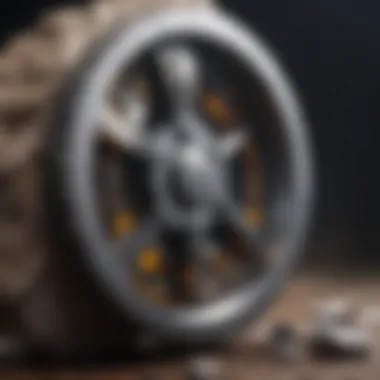
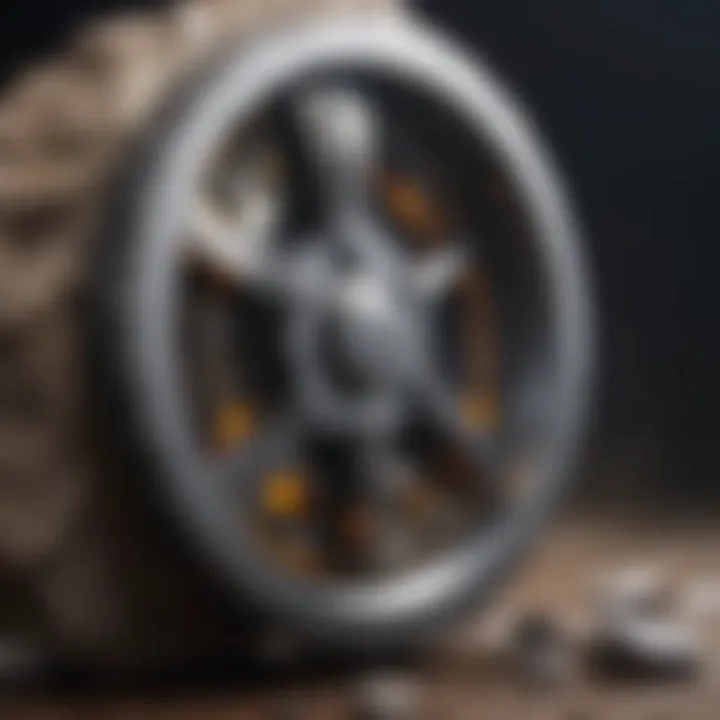
Intro
In the world of geology and rock collection, the tools we use can transform simple stones into remarkable works of art or critical specimens for study. One such tool, prominently utilized by professionals and hobbyists alike, is the diamond saw. Known for their precision, diamond saws have reshaped the way enthusiasts engage with rocks, gems, and fossils. This article dives deeply into diamond saws, providing a comprehensive analysis of their history, types, applications, and maintenance practices, enriching the reader's understanding of these indispensable tools.
It's not just a matter of cutting rocks but understanding the relationship between the saw, the material, and the desired outcome. Whether you are a seasoned geologist or a budding collector, grasping the nuances of diamond saw technology can elevate your work and appreciation for natural specimens.
History and Origins
Overview of Collectibles, Rocks, and Fossils
The journey of diamond saws begins long before their modern iteration. Traditionally, rocks and fossils were sliced using basic tools made from primitive materials. Over time, collectors have placed immense value on stones, leading to more sophisticated cutting methods.
The advent of diamond technology in saws marked a pivotal moment. Diamonds, being the hardest known substance, offered an unmatched ability to slice through tough materials with precision. This development not only revolutionized the industry but also attracted a broader audience of rock enthusiasts and collectors, eager to refine their collections.
Historical Significance and Cultural Impact
Throughout history, the craft of stone cutting has been embedded in various cultures. Ancient civilizations utilized rudimentary stone tools, and as they advanced, so too did their techniques. The introduction of diamond saws opened new doors for artists, jewelers, and scientists alike, promoting creativity and exploration in many fields. The ability to cut through intricate materials without losing detail allowed for the production of art pieces that showcased the natural beauty of each stone.
As diamond saw technology became widely adopted, it influenced not only the craft itself but also the cultural significance of gemstones and fossils. Collectors began to appreciate these natural entities not merely as objects but as pieces of history, each cut revealing hidden stories within.
Identification and Classification
Guide to Identifying Rocks and Fossils
Understanding the characteristics of various rocks and fossils is essential for anyone looking to incorporate diamond saws into their collection efforts. Identification relies on several factors, including texture, color, and mineral composition. For instance, igneous rocks can often be recognized by their glassy texture, whereas sedimentary rocks may reveal layers that tell tales of ancient environments.
Additionally, diamond saws can be instrumental in the identification process, as they allow for clean cross-sections to examine internal structures. When collectors slice a rough stone, they may uncover patterns or crystals that were previously obscured, offering a more accurate identification of their specimen.
Common Types and Variations
When it comes to diamond saws, there are several types suited to different applications.
- Blade Diameter: Saw blades come in various diameters, affecting both the saw's versatility and the type of cuts it can produce.
- Continuous Rim vs. Segmented Blades: Continuous rim blades are ideal for smooth cuts, while segmented blades excel in cutting tough materials.
- Wet vs. Dry Cutting Saws: Wet saws use water to cool the blade and reduce dust, while dry saws are lightweight and require no additional equipment.
Using the right saw type for each rock type not only enhances the cutting process but also helps in preserving the integrity of the specimen.
"Diamond saws are indispensable for rock and fossil collectors; they unlock the hidden beauty within nature's treasures."
Each type of saw has its niche, and understanding these differences is crucial for maximizing the potential of your rock collection.
Preamble to Diamond Saws
The realm of diamond saws holds significant importance, especially for those engaged in the art of rock cutting and shaping. For rock hounds, geologists, and enthusiasts alike, understanding diamond saws isn't just about knowing how they work; it's about appreciating the subtleties of their design and the efficiency they bring to rock processing tasks. Often seen as the backbone of modern geology, these tools have become essential for precision cutting where traditional methods just won't cut it, quite literally.
In this section, we explore the definition and purpose behind diamond saws, shedding light on their vital role in rock and mineral exploration.
Definition and Purpose
Diamond saws are specialized cutting tools embellished with diamonds at the edges of their blades. The diamonds provide the hardness necessary to slice through tough materials like granite, marble, and other dense rocks. The sheer cutting prowess of these saws is what gives them a special spot in the toolkit of professionals who work with geological specimens.
Essentially, the purpose of diamond saws extends beyond mere cutting. They are also utilized for shaping specimens into desired forms, allowing collectors to showcase their prized finds in the best possible light.
The advantages of using diamond saws include:
- Precision: Offers clean cuts without significant chipping.
- Versatility: Suitable for various rock types and sizes.
- Efficiency: Reduces time spent compared to manual tools.
Historical Background
The journey of diamond saws traces back to ancient times when tools for cutting rocks were rudimentary and labor-intensive. The real turning point came in the late 19th century with the invention of the diamond drill bit, which utilized the hardness of diamonds. This innovation paved the way for more advanced saw technology. Initially, diamond saws were a luxury item used primarily in industrial settings. However, their increasing accessibility led to a surge in popularity, particularly among rock enthusiasts and lapidaries.
As technology advanced, so did the design and functionality of diamond saws. By the late 20th century, improvements in blade manufacturing and motor engineering transformed these tools into user-friendly devices even amateurs could handle. The advent of handheld versions marked a new era, allowing individual collectors to pursue their hobby with greater ease and efficiency.
In summary, diamond saws have evolved considerably, morphing from complex tools employed solely in industry to indispensable assets for both professionals and hobbyists. Their rich history reflects a blend of art and science, and as we delve deeper into the mechanics and applications in later sections, the full scope of their significance in rock processing will become even clearer.
"Diamond saws have reshaped the landscape of rock processing, turning what once was a tedious task into a precise and fulfilling activity."
To understand the intricate workings of these tools, one must grasp the mechanics behind diamond saws. This further amplifies their importance in both professional settings and personal hobbies.
The Mechanics of Diamond Saws
Understanding the mechanics of diamond saws is crucial for anyone looking to use these tools effectively in rock processing. The intricate interplay between various components contributes significantly to the cutting efficiency and precision of these saws. Grasping how these elements work together not only enhances a user's experience but also ensures safety and optimal results when handling different rock types.
How Diamond Saws Work
Diamond saws employ an ingenious mechanism that relies on the hardness of diamond, a material capable of slicing through tough rocks effortlessly. In essence, the cutting process revolves around the saw's blade, embedded with diamond particles. As the blade spins, these particles create an abrasive action against the rock surface. This action gradually grinds away the material resulting in clean, precise cuts.
It’s akin to using a fine file to smooth out wood, but much more powerful and tailored for unyielding materials.
Components of Diamond Saws
A deeper dive into the components of diamond saws reveals three primary aspects: the blades, the motors, and the cooling systems. Each of these plays a pivotal role in the saw’s overall functionality and efficiency.
Blade Types
The blade is arguably the heart of any diamond saw, and understanding the different blade types is vital for optimal performance. There are generally two primary blade types: segmented blades and continuous rim blades.
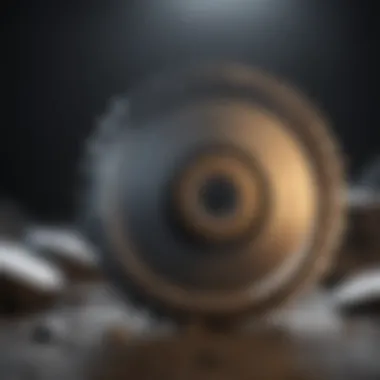

- Segmented Blades: These are designed for aggressive cutting. The gaps or segments help in waste removal, preventing heat buildup. This design is advantageous when cutting through harder materials, as it reduces the risk of the blade binding.
- Continuous Rim Blades: Certain owners prefer these blades for their smoother cuts, especially on softer rocks or stones. The uninterrupted edge allows for finer finishes, but these blades can generate more heat, making cooling systems essential during operation.
In summary, selecting the appropriate blade type can vastly affect the efficiency and quality of the cut, making this choice crucial.
Motor Specifications
The motor drive of a diamond saw serves as the powerhouse behind its operations. Ideally, one would look for a powerful motor, measured in horsepower, that offers a balance between speed and torque.
- Key Characteristics: A motor with higher RPM (rotations per minute) will generally cut faster. However, it should also provide sufficient torque to maintain that speed under load.
- Unique Features: For instance, a motor with variable speed control allows the user to adjust operations based on the material being cut. Higher speeds are better for softer materials, while slower speeds prevent burnishing on harder rocks.
By embracing the right motor specifications, you will elevate your cutting processes significantly, ensuring efficiency and minimizing strain on the machinery.
Cooling Systems
Coolant systems are not mere optional accessories; they are critical for maintaining the saw's integrity and prolonging blade life. Without proper cooling, blades can overheat, leading to warp or potential breakage.
- Key Characteristics: A common feature in many diamond saws is a built-in water-feed system. This keeps the blade cool during operation while also washing away debris.
- Advantages and Disadvantages: While water-cooling offers excellent cooling properties, it may not be suitable for all environments due to mess or risk of rust on electrical components. Hence, some users prefer dry cutting with specific blades, though this raises other considerations regarding dust and air quality.
Key Insight: A well-chosen diamond saw tailored to specific tasks can transform your rock cutting from a challenging endeavor to an effortless process.
Types of Diamond Saws for Rocks
Understanding the various types of diamond saws available for rock processing is essential for any enthusiast or professional in the geological or lapidary fields. Each type serves specific purposes, with unique capabilities and limitations that affect how they can be employed effectively. Choosing the right diamond saw can significantly influence the quality and precision of the work done, making it imperative to know the ins and outs of each option. With diamond saws being a cornerstone tool in both hobbyist and industrial applications, grasping the nuances among their types can lead to better-informed decisions and enhanced outcomes in rock cutting and shaping.
Handheld Diamond Saws
Advantages and Limitations
Handheld diamond saws are like the Swiss Army knives of the rock cutting world. They are versatile and allow for mobility, which makes them ideal for various tasks, whether cutting around the edges of stones or handling smaller pieces. One of the critical advantages of these saws is their lightweight and portability. Users can easily maneuver them in tight spots and transport them to various sites, whether they are in a workshop or on an outdoor adventure.
However, it’s important to recognize the limitations. These saws generally cater to smaller jobs and may struggle with thicker or denser materials. Additionally, the precision might not always be top-notch for intricate designs, making them less suitable for detailed work. Still, their ability to be handy makes them a commonly chosen option for those who appreciate convenience and ease of use in their rock processing endeavors.
Best Use Scenarios
When considering the best use scenarios for handheld diamond saws, one must think about the practical applications they excel in. They shine brightly in fieldwork where weight and space are critical factors. For instance, a geologist exploring remote sites or a lapidary working on smaller specimens would find these saws invaluable. Another scenario is in home workshops, where quick cuts are often needed due to a variety of rock formations.
A unique feature here is the adaptability of handheld saws to battery power, providing flexibility in locations without power sources. While they might not offer the robustness required for extensive industrial projects, those looking primarily for quick, on-the-go solutions will find that handheld diamond saws give them the edge they need.
Tabletop Diamond Saws
Capabilities
Tabletop diamond saws present a different ballgame altogether; they are specifically designed for stability and precision. The capabilities of these saws often allow for consistently clean cuts, making them exceptional for detailed work. When shaping gemstones or creating intricate patterns, the superior tracking of a tabletop saw stands out.
The comprehensive features, such as adjustable cutting depths and angles, add to their appeal among serious rock enthusiasts. However, their size can be a double-edged sword, as they occupy more space and are less portable than handheld options. For serious work environments or home setups, their precision can't be undersold, offering an invaluable tool for achieving the best cuts possible.
Safety Features
In terms of safety, tabletop diamond saws are designed with user protection in mind. Many come equipped with features such as blade guards and emergency stops, which are critical in reducing the likelihood of injuries during operation. The sturdiness of these machines also provides assurance for safety as they resist tipping over easily, unlike their handheld counterparts.
The main takeaway is that the safety features not only protect the user but also enhance confidence in performing precise work. They might require more setup time and can take up considerable space, but for those methodical workers, the safety they bring can be well worth it.
Industrial Diamond Saws
Heavy-Duty Applications
Industrial diamond saws exemplify power and efficiency designed for larger-scale operations. Their heavy-duty applications cater to cutting through some of the most formidable materials out there, combining strength and durability in edge technology. From quarry work to concrete processing, these saws perform feats that would be impossible with simpler tools.
The capacity to handle thicker rocks and massive blocks without sacrificing speed makes them a reliable choice for professionals in industries requiring consistent volume and precision. This capability empowers users to focus more on productivity than limitation as they tackle significant projects.
Cost Considerations
While the advantages are clear, potential buyers must weigh cost considerations heavily. Industrial diamond saws come with a higher price tag, and this investment must be justified through projected work volume and necessity. Factors include not just the initial cost but also maintenance, replacement parts, and even the energy consumption required for operation.
The decision hinges on assessing the scale of projects at hand. If an individual or company regularly engages in heavy-duty tasks, the expense can be a wise investment. For those just dabbling in heavier work, the hefty outlay may feel overwhelming and discourage the initial leap. Therefore, a clear understanding of both immediate needs and future expectations plays a pivotal role in determining the value of these tools.
Overall, recognizing the different types of diamond saws for rocks allows users to align their specific needs and preferences with the right tool. Each has its own unique strengths and weaknesses, which can make all the difference in the effectiveness of rock cutting and shaping tasks.
Applications of Diamond Saws
Understanding the applications of diamond saws goes a long way in appreciating their role in various industries and hobbies. These tools are not just for experts or industrial workers; they also find a place in the hands of enthusiasts and artisans. The importance of diamond saws lies in their versatility and adaptability to different tasks. Whether it's geological fieldwork, stunning lapidary creations, or simple rock tumbling, the applications are both practical and aesthetic.
Geological Applications
In geology, diamond saws serve an essential function in the study and analysis of rock samples. When geologists need to examine a rock core or establish precise measurements of geological formations, a diamond saw provides the accuracy they sought after.
- Sample Preparation: Diamond saws are critical for cutting rock samples into manageable sizes for analysis. This meticulous process allows geologists to identify mineral compositions, structure, and even the age of the rocks.
- Field Work: For those working in remote locations, handheld diamond saws become indispensable. With the right set of tools, geologists can slice through rock formations on-site, collecting samples without disrupting the geological context.
However, one must also be mindful of logistical aspects such as power sources and blade wear. These considerations can directly affect the efficiency of geological studies in the field.
Artistic and Recreational Uses
The artistic side of diamond saws is equally fascinating. They are lost in the art world, allowing creators to shape and polish rocks into beautiful pieces. The recreational aspect appeals to hobbyists, such as lapidary artists and rock tumblers, further showcasing the wide applicability of diamond saws.
Lapidary Work
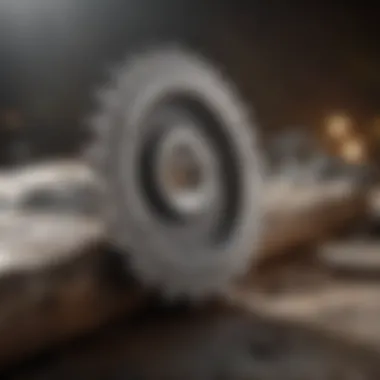
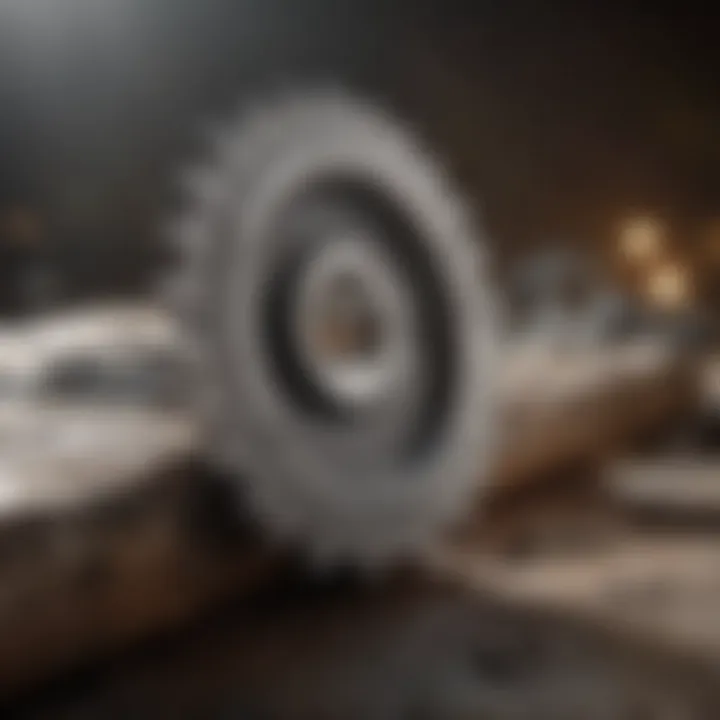
Lapidary work defines the craft of cutting and polishing gemstones and decorative rocks, transforming raw materials into stunning finished products. The beauty of using diamond saws for lapidary work lies in their ability to slice through tough stones like jade or agate with minimal effort.
- Precision Cutting: The ability to achieve precise cuts is a hallmark of lapidary work, with diamond saws ensuring smooth edges and perfect shapes.
- Versatility: These saws can handle various types of stones, making them a popular choice among jewelry makers and artists.
- Unique Feature: A significant advantage of lapidary work is the potential to create custom designs. This unique aspect fosters creativity while displaying individual artistry.
However, there’s a downside; the setup costs and the learning curve can be intimidating for beginners. Still, the final results often justify the investment, making lapidary work a popular and pursued passion.
Rock Tumbling
Rock tumbling offers a different perspective on how diamond saws are utilized. It involves taking rough stones and polishing them into beautifully smooth gems.
- Accessibility: Tumbling rocks can be done at home, making it a great hobby for many. It's relatively easy and allows enthusiasts to turn their rock collection into something special.
- Unique Feature: Unlike cutting, tumbling focuses on smoothing and polishing, without the need for complex setup or intricate skills.
- Advantages: The process provides satisfaction as one watches rough stones transform into shiny gems, fostering a deeper appreciation for geology and aesthetics.
Nevertheless, patience is required, as tumbling can be time-consuming, typically taking weeks to achieve a stellar finish.
Rock tumbling may feel like a slow process, but each turn reveals the story hidden in the stone.
In summary, the applications of diamond saws are profound and diverse, impacting various fields from scientific research to artistic expression. Their multifaceted uses underline their significance, not just as tools, but as instruments that bridge function and creativity.
Choosing the Right Diamond Saw
Selecting the right diamond saw is crucial, whether you're a seasoned rock enthusiast or just diving into the world of geology. With numerous options available, it can feel like finding a needle in a haystack. Your choice will directly influence your cutting efficiency, the quality of your work, and your overall satisfaction with the tool. As such, being informed about the specifics can save you both time and money in the long run.
Factors to Consider
Choosing a diamond saw involves various considerations. Here are some key factors that can help you zero in on the right tool for your needs.
Type of Rock
The type of rock you're working with significantly alters your choice of saw. Softer rocks like limestone or sandstone require a different blade than harder materials like granite or quartz. These harder stones are often sought after by collectors due to their beautiful colors and patterns. A diamond saw designed specifically for tougher rocks enables more precise cuts and minimizes wear on the blade.
One of the standout features of such saws is the diamond grit, which enhances cutting power. Still, using the wrong saw can cause damage not just to the blade but also to the rock you're working with, leading to disappointing results.
Thickness Variability
Thickness variability is another critical factor when choosing a diamond saw. If you're dealing with rocks of varying thickness, having a saw that accommodates this diversity will be advantageous. For instance, if you're working on a thin layer of rock but occasionally come across thicker sections, a versatile diamond saw proves to be quite beneficial.
The unique feature here is the adjustable depth settings available in many modern saws, allowing for precision control. However, these adjustments can sometimes complicate the cutting process, making it essential to understand how to operate such features effectively.
Budget Constraints
Budget constraints also play an undeniable role in your choice of diamond saw. Prices can range from a few hundred dollars for entry-level models to several thousand for high-end saws. Making the right financial decision often hinges on balancing quality against your budget.
A key characteristic of many budget-friendly options is their ability to offer basic functionalities without numerous bells and whistles. While these saws might not withstand heavy-duty use, they can still get the job done for casual collectors or hobbyists. That said, investing a bit more can yield substantial returns in terms of durability and efficiency.
Brand Comparisons
When we step into brand comparisons, things can get interesting. Each manufacturer has its strengths, whether it's durability, design, or specialized functions. Some brands might excel in providing low-cost solutions perfect for beginners, while others may cater to the heavy-duty user looking for a reliable partner for extensive projects.
Here's a rundown of some notable brands in the diamond saw market:
- Gemini: Known for their excellent balance between performance and cost, particularly suitable for lapidary works.
- Tile Master: Often recommended for DIY enthusiasts, offering a wide range of saws that work for both rocks and tiles.
- Blade Tech: Specializes in high-end options with robust features geared towards professional usage.
While brand loyalty can play a part in your decision, it is wise to review consumer feedback and compare features carefully to ensure you're making a well-informed choice.
Maintenance and Care for Diamond Saws
Proper maintenance and care for diamond saws is akin to tending a garden—neglect leads to weeds. Taking care of your saw not only prolongs its life but also enhances its cutting capabilities and overall effectiveness. When diamond saws are maintained correctly, they provide cleaner cuts and more precise shapes, crucial for any serious rock enthusiast or professional.
The alignment of the blade, cleanliness of the motor, and functionality of the cooling systems are just a few aspects that require regular attention. This segment lays out the essential practices and considerations necessary to keep your diamond saw in peak condition.
Regular Maintenance Practices
Keeping your diamond saw running smoothly involves several routine practices. Here are some key steps:
- Clean the Blade Regularly: After each use, ensure that the blade is free from debris, dust, or stone residue. A simple brush or cloth can do wonders here. Any build-up can cause uneven cutting and stress on the motor.
- Check Alignment: Blade alignment is crucial. Misalignment can result in unnecessary wear on the blade and motor. Use a level to check the alignment and make adjustments if needed.
- Inspect Cooling Systems: The cooling system is essential to prevent overheating. Periodically check the water reservoir or any cooling mechanisms to ensure there are no blockages that could hinder performance.
- Lubricate Moving Parts: Just as a well-oiled machine runs better, so too does your saw. Use appropriate lubricants on moving parts to reduce friction and avoid wear and tear.
- Replace Worn Components: Over time, certain components will wear. Pay special attention to the blade and bearings, and replace them as needed to maintain cutting efficiency.
Adherence to these practices not only optimizes performance but also enhances safety during operation.
Troubleshooting Common Issues
Even the best-maintained equipment can encounter issues from time to time. Here's how to tackle some common problems:
- Blade Not Cutting Properly: If the blade doesn't seem to cut effectively, it might be dull or misaligned. Check if it needs sharpening or repositioning.
- Overheating Motor: Frequent overheating can often be a sign of the cooling system failing. Make sure the reservoir isn't empty, and look for any blockages in the cooling pathways.
- Excessive Vibration: This could indicate a loose or damaged blade. Tighten connections and inspect the blade for any signs of wear or damage.
- Unusual Noises: Sounds outside the normal operation can signal mechanical issues. Inspect components for wear or loose fittings that could be causing the noise.
Regular monitoring and prompt correction of issues can prevent larger failures down the line. Don't hesitate to consult a technician if problems persist.
In summary, diligent maintenance and proactive troubleshooting save time, money, and frustration in the long run. They ensure your diamond saw remains a reliable tool in your collection, facilitating your passion for rock cutting and shaping.
Safety Precautions When Using Diamond Saws
When it comes to using diamond saws, safety should never be an afterthought. Whether you are a seasoned professional or a passionate hobbyist, understanding and implementing safety precautions can significantly reduce the risk of accidents and injuries. Diamond saws operate at various speeds and use extremely hard materials, which makes them powerful cutting tools that require respect and caution. This section covers essential safety measures every user should adopt, focusing on personal protective equipment and best practices to maintain a safe working environment.
Personal Protective Equipment (PPE)
Using diamond saws without proper protection is akin to walking a tightrope without a safety net. The nature of the work exposes users to potential hazards, including flying debris and harmful dust, making personal protective equipment (PPE) absolutely essential.


Safety Glasses
Safety glasses are not just an accessory; they're a critical line of defense against ocular injuries. These glasses provide a barrier against sharp projectiles that may fly around during cutting operations. A key characteristic of safety glasses is their shatter-resistant lenses, which can absorb impact without breaking. This durability is why safety glasses are a popular choice among rock enthusiasts and professionals alike.
One unique feature of many safety glasses is their anti-fog coating, which helps maintain visibility even in humid conditions. This situation is particularly advantageous when using water-cooled saws, as steam may cloud regular lenses. However, some might find that these coatings wear off over time, necessitating frequent replacements.
Gloves
Gloves are another vital piece of PPE when using diamond saws, as they protect your hands from cuts or abrasions caused by sharp edges. A common characteristic of work gloves in this context is their reinforced palms and fingers, which provide added protection without sacrificing dexterity. These gloves are highly regarded for their grip, allowing for a strong hold on tools and materials, enhancing control during cutting.
A unique feature of modern work gloves is their touchscreen compatibility, allowing users to operate devices without removing them. However, one should be mindful that gloves can sometimes cause a loss of tactile feedback, which requires a learning curve for those new to using diamond saws.
Respirators
Respirators are crucial for blocking harmful particles and dust generated during cutting, especially when dealing with tougher rocks. They help maintain good air quality, reducing the risk of respiratory issues that could arise from prolonged exposure to silica dust and other harmful particles. A noteworthy characteristic of respirators is their filtration system, which varies in effectiveness based on the type of filters used.
Using a respirator equipped with a HEPA filter can provide excellent protection, making it a favorable choice for many users. However, they can be uncomfortable, especially when worn for extended periods, so choosing the right fit and style is critical for consistent use.
Best Practices
Adopting best practices in addition to using PPE can enhance safety during cutting operations. Some essential guidelines include:
- Read the manual: Familiarize yourself with the operator’s manual before using the saw. Understanding specific features and recommended practices can prevent misuse.
- Check equipment: Always inspect the saw before starting any work. Look for wear on the blade, secure connection of components, and any other signs of damage.
- Work in a ventilated space: Ensuring adequate airflow reduces the build-up of harmful dust and helps maintain a safer working environment.
- Maintain focus: Stay alert while operating the saw, and avoid distractions that could lead to accidents.
Adhering to these safety precautions can make a significant difference in ensuring a secure and efficient cutting experience when using diamond saws. Ultimately, safety should always take precedence, allowing users to focus on their passion for working with rocks.
Environmental Considerations
As we delve deeper into the realm of diamond saws, it’s crucial to address the environmental considerations that accompany the use of these tools in rock processing. The extraction and processing of materials has always posed environmental challenges, and awareness of these concerns promotes responsible practices in an industry that can easily overlook sustainability.
The importance of this topic in the article cannot be underscored enough. Diamond saws, while efficient in cutting and shaping, can also have a drastic impact on the environment if not managed properly. Understanding the implications of rock processing allows enthusiasts and professionals to make informed decisions about the tools they use and the practices they adopt.
Sustainability in Rock Processing
Sustainability within the context of rock processing primarily revolves around minimizing harm to the environment while maximizing resource efficiency. Companies and hobbyists alike can focus on several key areas:
- Responsible Sourcing of Diamonds: Not all diamonds are created equal. Choosing diamonds sourced from ethical mines helps reduce the environmental footprint. Lab-grown diamonds can also serve as a viable alternative that mitigate some of the negative impacts associated with traditional mining.
- Energy Efficiency: Many newer diamond saw models incorporate energy-efficient motors and components. This not only lowers operating costs for users but lessens reliance on fossil fuels, contributing to cleaner operations.
- Water Usage: The cooling systems used in diamond saws often rely on water. Using closed-loop systems where water is recycled or exploring systems that require less water can drastically reduce overall consumption in rock processing facilities.
Moreover, education plays a vital role. Workshops and seminars on sustainable practices in diamond sawing help increase awareness among collectors and professionals. It's about creating a culture of responsibility in enthusiasts and the industry.
Waste Management Practices
Handling waste is another pressing concern within the diamond cutting sector. Waste, in the form of stone shards and slurry, can accumulate quickly and pose a risk to both local ecosystems and workers. Here are several considerations to bear in mind:
- Recycling Waste Materials: Many facilities now implement recycling programs for the material produced during cutting. For instance, Aggregate Industries has made strides in turning waste stone into usable materials, thereby reducing landfill contributions.
- Safe Disposal of Slurry: The slurry created during cutting often contains contaminants. Ensuring that this slurry is disposed of following local regulations is essential. Some methods focus on separating water from solid waste for more efficient disposal.
- Public Awareness Campaigns: Educating the community about proper waste disposal and management strategies can create a ripple effect, pushing for more sustainable practices across the board.
"Sustainability isn't just about individual responsibility; it's about fostering a collective mindset to protect our planet for future generations."
Future Trends in Diamond Saw Technology
As we look towards the horizon, the field of diamond saw technology is poised for a transformation. This section sheds light on emerging trends that are set to not only enhance the efficiency and precision of diamond saws, but also adapt to the evolving needs of rock and fossil enthusiasts. Understanding these trends is crucial for both hobbyists and professionals alike, as they promise significant improvements in usability, performance, and sustainability.
Innovations on the Horizon
The pace of technological advancement drives the innovation in diamond saws. Several key developments are making waves:
- Smart Technology Integration: Imagine diamond saws equipped with sensors and smart capabilities that allow for real-time monitoring of blade wear and performance metrics. Such advancements may lead to predictive maintenance, reducing downtime and prolonging the lifespan of saws.
- Eco-Friendly Materials: There's a growing emphasis on sustainability within the rock processing community. Biodegradable or recyclable materials are being explored for diamond saw production. This shift not only lessens environmental impact but also aligns with a broader trend toward green technology.
- Improved Cooling Systems: Efficient cooling systems are critical during cutting operations to prevent overheating. Innovations might include closed-loop cooling designs that minimize water usage while providing optimal cooling performance.
"The future is not something we enter. The future is something we create." – Leonard I. Sweet
- Enhanced Cutting Techniques: Advancements in laser technology stand out. When combined with diamond saws, lasers can offer unparalleled precision, making complex cuts easier and more accurate. This technique could revolutionize various applications, from lapidary work to geological research.
Potential Impact on the Industry
The ongoing evolution in diamond saw technology is likely to ripple through the industry, affecting numerous aspects:
- Market Dynamics: As manufacturers adopt these new technologies, we can expect shifts in pricing structures. High-tech saws may command premium prices, but increased efficiency could lead to cost savings in other operational areas.
- User Experience: With enhanced features, diamond saws may become more user-friendly. Intuitive interfaces, augmented reality training tools, and better ergonomic designs would make these tools accessible to a wider audience, from seasoned professionals to enthusiastic beginners.
- Training and Skill Development: A wave of new technology will necessitate updated training programs. Educational resources geared towards understanding the latest saw technologies and techniques will likely proliferate, helping users adapt to these advancements.
- Global Reach: The globalization of the rock collection community might influence distribution channels as well. Enhanced diamond saws could find their way into more markets, expanding availability in regions previously underserved.
In summary, future trends in diamond saw technology signal an evolutionary leap with broad advantages, from material sustainability to user experience enhancements. The industry is at the brink of a new era, promising ever more precise and efficient tools for rock collectors and professionals alike.
Finale
As we wrap up our discussion on diamond saws, it's crucial to appreciate how these tools serve a vital role not only in geology but also in the artistic world of rock collecting and processing. Understanding their nuances—like the different types of diamond saws available, their mechanics, and various applications—equips enthusiasts and professionals with the knowledge to make informed choices.
In this article, several key elements emerge:
- Versatility of Saws: Different diamond saws cater to a spectrum of needs, from handheld models designed for precision in smaller rocks to industrial saws meant for large-scale mining operations. Each type comes with its own specifications that can significantly affect performance and safety.
- Innovative Technology: The advancements in diamond saw technology signal an exciting future for rock processing. Improvements in cooling systems and motor specifications enhance efficiency, reducing both work time and energy expenditure.
- Safety and Care: Safety precautions are paramount. Knowing how to care for and maintain these tools not only extends their lifespan but also safeguards users from potential hazards. Regular maintenance practices are essential in ensuring that the equipment operates optimally.
- Environmental Impact: As with any industrial tool, the environmental footprint of diamond saws cannot be overlooked. Sustainable practices in rock processing are becoming increasingly important for both hobbyists and professionals.
By synthesizing the information presented throughout, we uncover that the efficient use of diamond saws is not merely about the act of cutting, but also about understanding the ethics surrounding the practices and implications for the environment.
"The primary purpose of a diamond saw is to empower creativity, turning raw rock into art while ensuring responsible use of resources."
Key Takeaways
- Understanding Types: Different diamond saws—handheld, tabletop, and industrial—offer unique advantages tailored to various projects.
- Technology Matters: Innovations in saw design increase cutting efficiency and enhance user safety.
- Maintenance is Key: Regular upkeep prevents breakdowns, ensuring reliability and safety.
- Think Green: Exploring sustainable practices is essential in today’s environmentally-conscious landscape.
Final Thoughts on the Use of Diamond Saws
Using diamond saws goes beyond merely achieving a finished product. For collectors and professionals alike, it’s about connecting with the material and embracing the meticulous process involved. Mastery of these tools invites deeper exploration into the geological features of rocks and minerals, revealing their beauty and complexity.
Every cut tells a story, and with the proper knowledge and advancements in technology, those stories can be crafted with precision and creativity. Whether you're a seasoned professional or a bubbling hobbyist, understanding the role of diamond saws in your projects is key to your success. As we look toward the future, we must stay informed and responsible, ensuring that our passion for rocks contributes positively to both our communities and the environment.



